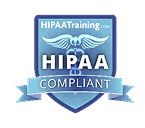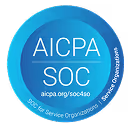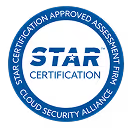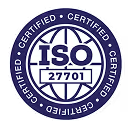You've got a business to handle, clients to satisfy, resources to monitor, and a whole lot of chaos that comes during peak working hours.
So how about we give those overworked spreadsheets a break? We see you, professional services teams, striving to achieve efficiency and profitability while juggling various tasks and challenges when it comes to project planning. So, we're cutting to the chase and diving straight into the world of seamless resource management software.
This article explores how resource planning software can simplify your operations, save time, and maximize your resources.
What are the different types of project resources?
Effective project resource management ensures that tasks are completed on time, within budget, and to the highest quality standards. All resource management strategies have the different types of resources as their crux. But what exactly are the different types of project resources?
Human resources
These are the people who will be working on the project. They include project managers, team members, contractors, and freelancers. Properly allocating and utilizing their skills and expertise is key to achieving project goals.
Equipment and tools
Project resources also include the physical equipment and tools needed to complete the project. This can range from basic office supplies to specialized machinery or software.
Materials
Depending on the nature of the project, you may require various materials such as raw materials, components, or even finished products.
Financial resources
This includes the budget allocated for the project, which covers expenses such as salaries, equipment costs, and any other financial requirements.
By understanding the different types of project resources, you can effectively plan and allocate them to ensure a seamless workflow, maximizing productivity and minimizing any potential roadblocks. Utilizing resource management software can further streamline this process, ensuring a smooth and efficient project execution.
Before we get into the nitty-gritty of using resource management software, we should understand the resource management process.
The resource management process
Every professional service business knows it - resource management can be a make-or-break deal in our everyday operations. It's what keeps everything humming along smoothly. Sure, it might not be as glamorous as landing those big accounts, but it's every bit as crucial - if not more so.
Utilization
In any organization, effective resource management is essential for optimizing productivity and achieving business goals. One crucial aspect of resource management is utilization—ensuring that resources are being efficiently utilized to their full potential.
Utilization involves strategically allocating resources in a way that minimizes waste and maximizes output. By carefully analyzing the needs of each project and matching them with available resources, companies can avoid over or underutilization, leading to improved productivity and cost-effectiveness.
Tracking utilization levels is also important for resource planning and forecasting. By monitoring resource usage and identifying any inefficiencies or bottlenecks, companies can make informed decisions about resource allocation, hiring needs, or potential adjustments to project timelines.
Implementing a robust utilization tracking system, such as resource management software, empowers companies to gain real-time insights into resource allocation and availability. This visibility enables organizations to proactively adjust resource assignments, ensuring that the right resources are allocated to the right projects at the right time.
By effectively managing resource utilization, organizations can harness their full potential, optimize productivity, and ultimately achieve long-term success.
Resource plan
Developing a comprehensive resource plan is crucial for any project's success. A resource plan outlines the necessary resources required for the project, such as personnel, equipment, materials, and budgets. By creating a detailed resource plan, project managers can effectively allocate resources, maximize efficiency, and minimize potential risks.
The resource plan begins by identifying the specific resources needed for each phase or task of the project. This includes determining the number and skills of personnel required, the type and quantity of equipment needed, and the materials necessary for completion. Additionally, financial resources such as budgets and funding sources should be clearly outlined in the plan.
Once the resources are defined, the next step is to prioritize and assign them to the project activities. This involves considering factors such as availability, capability, and cost-effectiveness. The resource plan should provide detailed timelines, indicating when and how the resources will be allocated and utilized throughout the project lifecycle.
Regular monitoring and updating of the resource plan is essential to ensure its effectiveness. As the project progresses, adjustments to the plan may be necessary, especially if there are unexpected changes in resource availability or project requirements.
With a well-structured resource plan, project managers can effectively manage and utilize resources, resulting in improved project outcomes and overall success.
Resource analysis
Resource analysis is a critical component of the resource management process. It involves evaluating the resources available to an organization and determining how they can be effectively utilized to achieve its goals and objectives. By conducting a thorough analysis, organizations can gain insights into their resource strengths, weaknesses, opportunities, and threats.
The first step in resource analysis is to identify and categorize the resources. It is important to consider all available resources, as they all contribute to the organization's overall capabilities.
Once the resources are identified, the next step is to assess their quality and quantity. This involves evaluating the condition and reliability of physical assets, as well as the competence and expertise of employees. By understanding the quality and quantity of resources, organizations can determine their potential to support strategic initiatives.
Furthermore, resource analysis involves evaluating the availability and accessibility of resources. This includes considering factors such as cost, location, and time. By understanding the availability and accessibility of resources, organizations can make informed decisions about how to best allocate and leverage them.
Another important aspect of resource analysis is recognizing potential resource gaps or deficiencies. This involves identifying areas where the organization may be lacking in certain resources or where resources may be underutilized. By identifying these gaps, organizations can take proactive steps to address them, such as investing in new resources or reallocating existing ones.
Resource scheduling
Resource scheduling involves effectively allocating and managing resources to ensure their optimal utilization and smooth execution of projects.
In the modern business environment, where organizations are often required to handle multiple projects simultaneously, resource scheduling plays a critical role in maximizing productivity and minimizing delays. By carefully planning and assigning resources, teams can work harmoniously, avoiding conflicts and bottlenecks.
To accomplish efficient resource scheduling, it is essential to have a clear understanding of project timelines, task dependencies, and resource availability. This information helps in determining the right resources for each assignment and aligning their schedules accordingly.
Technology has greatly facilitated resource scheduling with the advent of advanced project management software. These tools provide real-time visibility into resource allocation, allowing managers to make informed decisions and address any issues promptly.
By implementing effective resource scheduling practices, organizations can optimize productivity, control costs, and enhance overall project success. It enables teams to achieve higher efficiency while ensuring that resources are appropriately allocated, contributing to the successful completion of projects within designated timeframes.
Resource allocation
Project resource allocation involves determining how and where resources will be allocated within an organization to ensure goals and objectives are achieved. Here are five key principles of resource allocation that can help organizations improve their overall resource management practices:
1. Prioritization
Prioritizing resources is essential to ensure that the most critical projects and tasks receive the necessary resources. This involves identifying the highest priority activities and assigning people accordingly. By focusing on the most important areas, organizations can maximize efficiency and achieve desired outcomes.
2. Balance
Resource allocation should aim for a balance between various projects and tasks. It is essential to distribute resources evenly, ensuring that no one project or task is overloaded with resources while others suffer from a lack of support. This balance helps in maintaining a steady workflow and optimizing resource utilization.
3. Flexibility
Resource allocation must be flexible to adapt to changing conditions. As new projects or unexpected events arise, organizations need to reallocate resources to address these challenges effectively. By being adaptable and responsive with work allocation, organizations can minimize disruptions and optimize resource allocation in real time. Resource allocation software like Rocketlane helps bring in the flexibility.
4. Collaboration
Effective resource allocation requires collaboration between different departments and teams. By fostering open communication and collaboration, organizations can better understand resource needs across different areas and allocate resources more effectively. This ensures that resources are utilized efficiently and avoids duplication of efforts.
5. Evaluation
Regular evaluation of resource allocation is necessary to identify any inefficiencies or bottlenecks. By monitoring resource usage and outcomes, organizations can identify areas for improvement and make adjustments accordingly. Feedback from stakeholders and team members can also provide valuable insights for enhancing resource allocation processes. Employ resourcing software to automate most of this process.
In conclusion, resource allocation is a critical component of the resource management process. By following these five principles – prioritization, balance, flexibility, collaboration, and evaluation – organizations can optimize their resource allocation practices and enhance overall efficiency and effectiveness. Proper resource allocation ensures that resources are utilized in the right places at the right time, maximizing productivity and achieving desired outcomes.
Resource tracking
Resource tracking involves monitoring and controlling the allocation of resources throughout a project's lifecycle.
Effective resource tracking helps project managers ensure that resources are being utilized optimally. By accurately monitoring resource usage, they can identify any inconsistencies or bottlenecks and take corrective actions promptly. This not only helps in maintaining project schedules but also ensures that resources are allocated based on priority and need.
In addition to monitoring usage, resource tracking also involves documenting and analyzing resource data. This information provides valuable insights into resource availability, utilization, and costs. It enables project managers to make informed decisions regarding resource allocation, estimate future requirements, and evaluate the overall efficiency of resource utilization.
Moreover, resource tracking facilitates accountability and transparency within the project team. It allows stakeholders to easily access information on resource usage and allocation, promoting a collaborative and efficient working environment.
By effectively monitoring and documenting resource usage, it enhances project outcomes, improves decision-making, and fosters a culture of accountability and transparency.
Resource management techniques
In today's fast-paced business environment, effective resource management is crucial for organizations to achieve their goals and maximize their success. Resource management involves the planning, allocation, utilization, and smoothing of resources to ensure that projects are completed on time, within budget, and to the highest quality standards.
Here are the five most common resource management techniques:
Resource forecasting
Resource forecasting is the process of estimating the type and quantity of resources needed for current and future projects. It involves analyzing past trends, considering project requirements, and taking into account external factors that may impact resource availability. By accurately forecasting resources, organizations can proactively plan, hire, or acquire resources and avoid potential bottlenecks or delays.
Resource allocation
Once resources have been forecasted, the next step is resource allocation. This resource management technique involves assigning resources to specific tasks or projects based on their availability, skills, and expertise. Resource allocation can be a complex process, particularly when multiple projects or teams are involved. Effective resource allocation requires careful consideration of each resource's workload, priorities, and project dependencies. By optimizing resource allocation, organizations can ensure that resources are utilized efficiently and that project timelines are met.
Rocketlane's Auto-allocate feature takes the guesswork out of this process and helps you find and allocate the right team members in a jiffy!
Resource leveling
Resource leveling involves redistributing resources across projects or tasks to eliminate resource overloads or underutilization. This technique is used to balance the workload and optimize resource utilization. Resource leveling helps organizations avoid burnout and bottlenecks by evenly distributing resources and preventing overallocation or underutilization of resources. By strategically managing the availability and workload of resources, organizations can enhance productivity and minimize project delays.
Resource utilization
Resource utilization focuses on maximizing the productivity and efficiency of resources throughout the project lifecycle. It involves monitoring and tracking resource performance, identifying any gaps or inefficiencies, and implementing strategies to improve utilization levels. Effective resource utilization can significantly impact project delivery and success. By identifying and addressing resource constraints or deficiencies, organizations can enhance productivity, complete projects faster, reduce costs, and improve billable utilization.
Resource smoothing
Resource smoothing is a technique used to minimize resource fluctuations and optimize resource demand. It involves adjusting project timelines or task dependencies to ensure a consistent and steady workflow. Resource smoothing helps organizations manage resource capacity and demand fluctuations. By identifying potential resource conflicts or imbalances early on, organizations can proactively adjust project schedules or resource allocation to maintain a stable workflow and ensure project success.
Investing in resource management techniques is a proactive approach that can yield long-term benefits and competitive advantage in today's competitive business landscape.
How PSA software helps with resource management
Resource management is a vital aspect of any business, ensuring that the right people with the right skills are assigned to the right projects at the right time. Effective resource management leads to improved productivity, increased client satisfaction, and, ultimately, more successful projects.
This is where Professional Services Automation (PSA) software comes into play, offering a seamless solution for managing resources efficiently.
One of the key benefits of a comprehensive PSA tool is its ability to provide real-time visibility into resource availability and allocation. With a few clicks, project managers can access comprehensive dashboards that display the availability and utilization of team members. This empowers them to make informed decisions about resource allocation, preventing any potential bottlenecks or overloading individual team members. By ensuring that resources are optimally utilized, businesses can achieve better utilization rates, reduce project delays, and maximize profitability.
A robust PSA software also enables businesses to effectively plan and schedule resources. They offer sophisticated scheduling features that the usual project management software doesn't, helping project managers assign resources to projects based on their availability, skills, and workload right within the tool. This helps prevent any conflicts or overlapping resource assignments, ensuring that each project receives the necessary attention and expertise it deserves. Additionally, a well-rounded PSA software allows for easy collaboration and communication among team members, facilitating resource planning and enabling seamless coordination for successful project execution.
Check out Rocketlane PSA: The best resource management tool out there
Rocketlane PSA offers powerful resource management capabilities designed to streamline your project planning process. It offers comprehensive resource planning, precise scheduling, and robust resource management capabilities alongside time-tracking.
Rocketlane PSA ensures optimal team productivity by providing detailed data about your team’s capacity and allowing accurate workload forecasting. With Rocketlane's resource management software, you can:
- Identify suitable team members for each project role
- Determine availability during project timeframes
- Predefine required roles and hourly commitments at the template level
- Predict and overcome potential resource bottlenecks
- Make data-backed hiring decisions for high-demand roles
Rocketlane PSA is the chosen solution for professional services businesses and software implementation partners.
Begin your journey to enhanced productivity and efficient project planning with Rocketlane today.
Experience the power of efficient resource management with Rocketlane. Book a demo now!












